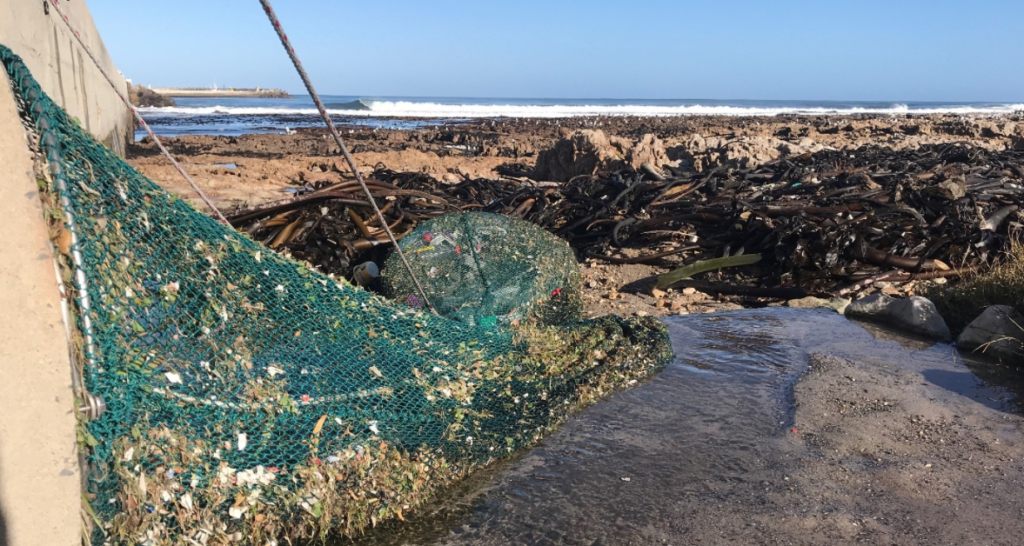Gansbaai Harbour has long struggled with excessive pollution. However, thanks to a little inspiration from Australia and the dedicated efforts of Wildfred Chivell, founder of the Dyer Island Conservation Trust, this area finally has a hope of fighting back against plastic pollution.
Chivell realised the need for a net system over one of the storm water drain outlets in Gansbaai, and inspired by a successful Australia project with similar aims has managed to install a much-needed system in the area.

The first net design was sponsored by Marine Dynamics Tours and project leaders Hennie Otto from Marine Dynamics and Benjamin Kondokter from the Overstrand Municipality. The net was installed on World Oceans Day on June 8.
Unfortunately, the net tore during a rainstorm due to a design flaw and incorrect oyster net used. Otto and Kondokter didn’t stop there, though, and approached Ian Wessels of Wildegans Fishery. The fishery kindly lended their expertise in stitching work and sardine purse seine net for free, so the system could be reinstalled on July 3 – which also happened to be Plastic Bag Free Day.
The net’s design aims to prevent pollutants and solid waste from being carried from local road networks into the storm water system, and eventually the marine environment.

“We noted the pollution from the storm water drain in the Gansbaai harbour, whilst on a clean-up,” said Wilfred Chivell. “The outlet leads straight to nearby rock pools and into the ocean. The kelp that traps some of the waste makes it difficult to clean and this too is ultimately washed out to sea. We have been doing cleans up for twenty years and 80% of the waste is plastic. Dyer Island Conservation Trust is the first port of call for marine animal rescues and strandings in the Gansbaai area and we have witnessed first-hand the impact on our marine wildlife.
“We hope that through this project we can minimise this impact by reducing the amount of waste entering the marine system. Unfortunately, most of the waste will probably not be suitable for recycling, but we will do this where possible. This is a worldwide problem and our dream is to roll this out in the Overstrand and in South Africa,” he added.
The net will be monitored by the Dyer Island Conservation Trust team as the project continues, and the collected litter will be assessed. There are a total of 63 storm water outlets in the Gansbaai area alone, and if successful, the project will hopefully extend to more areas and become a long-term collaboration with the Overstrand Municipality, starting with more problematic areas being dealt with.
Grant funding applications have been made by the committed teams at Marine Dynamics and the Dyer Island Conservation Trust and plans are to turn the collected litter into artworks and educational displays going forward.
Cape Town has a huge number of concerning pollution hotspots that could benefit from similar project, be it Black River or Liesbeek River, and hopes are that this project is not only successful in Gansbaai but will spread across the Mother City in years to come.
You can find out more about the Dryer Island Conservation Trust and how you can support them here.
Pictures: Hennie Otto, Marine Dynamics

